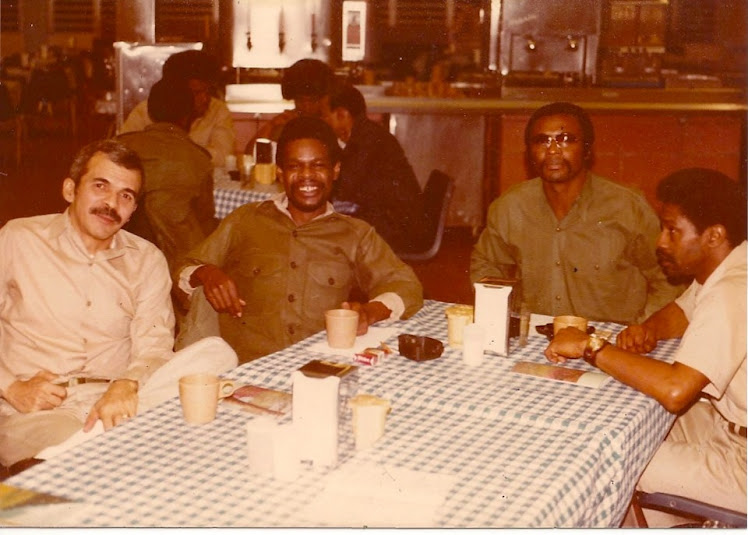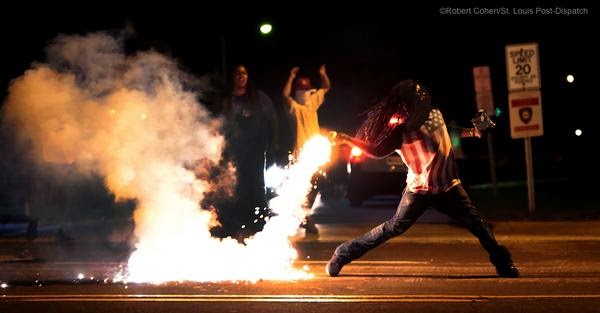Saturday, May 18, 2013
Commentary by Eddie G. Griffin
A disabled African-American
man was tasered to death by the Fort Worth Police Department. Jermaine Darden, age
34, a 300-pound asthmatic on a breathing machine, was wrestled to the floor and
tased, after police kicked in his unlocked front door on a “no-knock” warrant. Officers
claimed he was resisting arrest when he would not comply with their order to roll
over on his stomach. But family members claimed the man was having breathing problems,
which were especially aggravated when he tries to lie on his stomach.
Darden’s mother, Donna Randle
describes what happen: “When they came in, they had
their weapons drawn like we were members of a drug cartel. There were six
people who told the police the man had health problems, yet they continued to
do what they did.”
She is now
asking why the police had to “use such excessive force.”
The incident
took place in the same neighborhood where Michael Jacobs, Jr., a 24-year old mentally
challenged African-American, was tasered to death by police in April, 2009. The
City of Fort Worth eventually had to pay a $2 million settlement to the family.
Darden would be
the seventh taser related death in the city’s history.
There have been
several attempts by the community to reconcile with the FWPD over racially
charged excessive force issues. The problem with taser related deaths should
have been settled when Chief of Police Jeff Halstead negotiated with TASER
International, the maker of the stun guns, to modify the design of their taser
product, which would allow an automatic shut off after a 5-second burst. But
change the weapon’s shut-off system does not change police abusive practices in
its deployment. Tasers still kill, with or without a 5-second shutoff. And Darden
is the second taser related death since Michael Jacobs, Jr.
It should be
evident here of a violation of police policy. According the WFAA 8 Jim Douglas
report, the weapon was deployed multiple times. What is not clear is whether one
officer used the override on the 5-second cutoff or whether several tasers were
deployed at once. The incident is still under investigation.
Besides FWPD
policy, whether officers complied with it or not, there are serious human
rights and constitutional questions about the right of the accused, and the
nature of the heavy-handed gang buster tactics.
Human Rights
advocates have always contended tasers to be torture in violation of the Eight
Amendment’s protection against cruel and unusual punishment. A victim being stunned
by 50,000 volts of electricity is equivalent to being electrocuted by high
voltage utility wires, or comparable to the electric chair.
More
importantly, however, is that a person has the right to life. No one should be
summarily executed by electrocution at the whims of a law enforcement officer.
This violates the First Amendment Right to life, and the Sixth Amendment Right to
Due Process.
It would be fruitless, however,
to argue constitutional rights issues with the same agency guilty of the violations. If
the agency cannot enforce its own policy and the City unable to protect the
public, then monetary retribution should be exacted as heavily as possible. Corrections
can and will be made, if liabilities for abuses of authority began to cost more
than the City can willingly afford.
Of course, little
defense can be offer for Derrick Anthony Birdow who was tasered to death while in the
act of killing a preacher. Some might rationalize his death as justifiable
in the heat of the moment. But the point still stands: Tasers kill. And
multiple jolts of 50,000 volts of electricity will kill with surety, something every
FWPD officer should know. Thus, the killing of Darden should not have come as a complete
surprise to the deploying officer or officers.
Someone needs to be held
accountable. First, there is the officer or officers who deployed the weapon or
weapons. Was he or she or they criminally negligent? If they had full knowledge
of the Michael Jacobs tragedy, then they cannot claim ignorance.
Then there is the FWPD itself. Do loopholes
in its policy allow for and exonerate such on-the-spot street summary execution of
suspects, contrary to the constitutional rights of the suspect? The officer who
tased Michael Jacobs to death claimed she did not know that holding the taser
trigger down continued to shoot electricity into his body. Nobody ever told her,
and TASER International never educated officers about the risks. What excuse can
they offer now to exonerate them of their legal and criminal culpability?
The third party is the City of
Fort Worth, who are obligated to back the police action and cover their liabilities in
cases where excessive force is employed. Shouldn’t they have learned something
from the Jacobs’s case? Didn’t they assure the community that this would never
happen again where an innocent person would be tasered to death?
Fourth, there is TASER
International who falsely advertises tasers are non-lethal weapons. They are
the guiltiest insofar as they leave cities, like Fort Worth, to pick up the
pieces, pay off the wrongful death suits, while they continue marketing their product
as if it does no harm.
There is a memorial south of Fort Worth filled with
crosses for those killed by tasers, named the Michael C. Jacobs, Jr. Memorial.
The official death count now
stands at 779, with a cross for Jermaine Darden
to be added. Here is a list of those who died by tasers in Fort Worth:
· November 2, 2004: Robert Guerrero,
21, Fort Worth, Texas
· April 3, 2005: Eric Hammock, 43, Fort
Worth, Texas
· June 24, 2005: Carolyn Daniels, 25,
Fort Worth, Texas
· August 23, 2006: Noah Lopez, 25, Fort
Worth, Texas
· April 18, 2009: Michael Jacobs Jr.,
24, Fort Worth, Texas
·
October
29, 2012: Derrick Birdow, 33, Fort Worth, Texas
·
May 17, 2013: Jermaine
Darden, 34, Fort Worth, Texas
As for the investigation by the
FWPD’s major-case unit and the Department’s heavy-handed “no knock” tactic that
allowed the police to kick open a family’s “unlocked door”, under the pretext
of a big drug raid that eventually cost this disabled man his life, let’s see what
they were after and what they netted for their effort:
Five people who were
arrested:
•
[Suspect No. 1], age 25, suspected of
possessing 1 to 4 grams of a controlled substance and 2 to 4 ounces of
marijuana.
•
[Suspect No. 2], age 22, suspected of
possessing less than 2 ounces of marijuana. Police also found that [Suspect No. 2] was wanted on two
warrants from other jurisdictions.
•
[Suspect No. 4], age 27, accused of
evading arrest and detention. [Suspect
No. 4] also had a warrant.
•
[Suspect No. 5], age 29, and [Suspect No. 6], age 29, both with class
C warrants from Fort Worth. [Suspect No.
6], who identified herself as Darden’s cousin, said she has an unpaid
ticket for talking on a cellphone while driving in a school zone.
In a police report, Officer
N.B. Danford was the one who drafted the probable-cause warrant to search for
cocaine at the house. The “no-knock” warrant was signed by Tarrant County
Magistrate Cheyenne Minick at 3:35 p.m. Thursday, according to the report.
The investigation should not
begin with the suspects, because there was never any really “big fish” in this
expedition, only a few misdemeanor guppies at worst. So they kick down an
unlocked door and kill a man for the above probable-causes.
No, the investigation should begin at the determination level of probable cause and a criminal justice system that allows a magistrate who signed off on a “no-knock” (kick-the-door-down) raid to bag a few petty misdemeanor offenders.
No, the investigation should begin at the determination level of probable cause and a criminal justice system that allows a magistrate who signed off on a “no-knock” (kick-the-door-down) raid to bag a few petty misdemeanor offenders.




